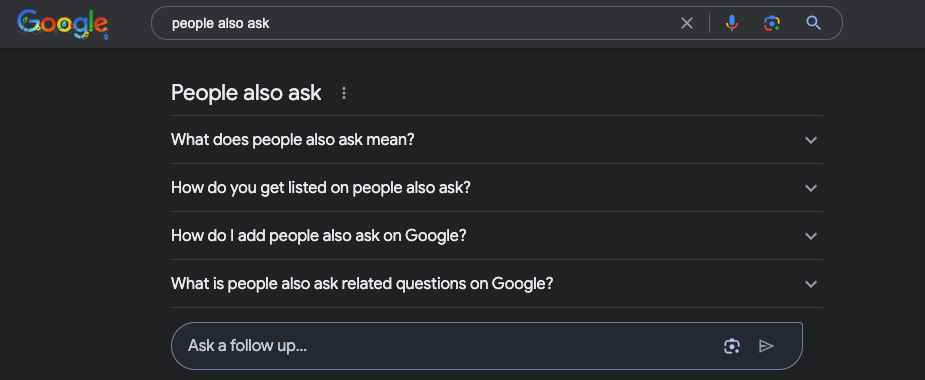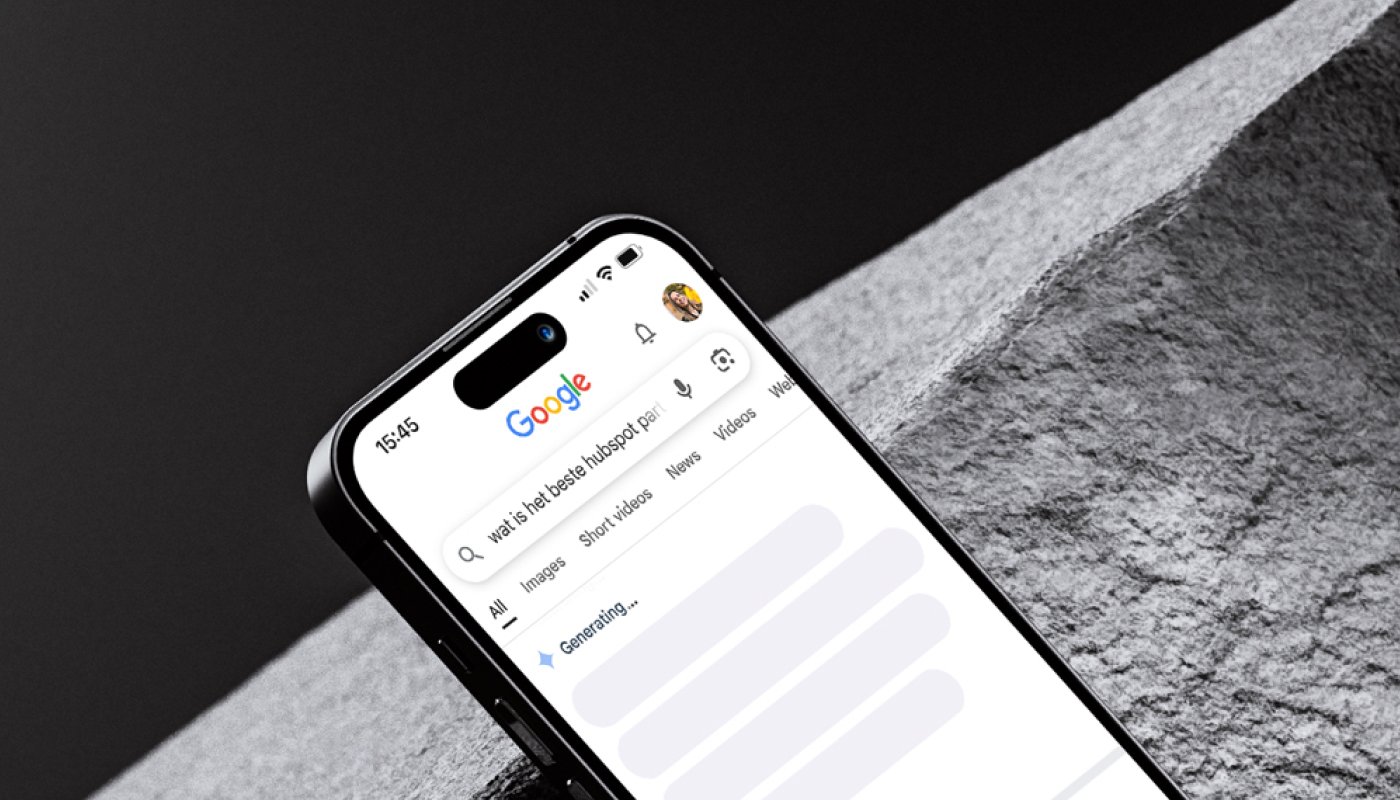AI is increasingly woven into our search experience, and one of the most notable developments is the emergence of AI Overviews (AIO). These AI-generated summaries appear at the top of certain searches, especially for informational queries, and are changing the way users find information. For marketers, this is something to watch out for now. In this blog, we list the most important insights, opportunities and concerns.
What exactly are AI Overviews?
AI Overviews are search results in which Google shows an automatically generated summary of the answer to a search query at the top. The content does not come one-to-one from a specific Web page, but is compiled from multiple sources. The result: users get the answer immediately, without having to click through.
This sounds convenient for the user, but immediately raises the question for marketers and SEO specialists: what does this mean for our findability?

Will AI Overviews already be shown in the Netherlands?
Yes, since May 2025 Google's AI Overviews are officially available in the Netherlands. Tools like SEMrush can help you see if an AIO is shown per keyword.
According to recent research by SE Ranking, the presence of AI Overviews in the Netherlands before Google's official rollout was quite limited. Analysis of 103,934 keywords showed that only 5.22% of searches resulted in an AI-generated response. That means 94.78% of searches still returned traditional search results, without AIOs.
Now that AI Overviews are live, visibility has increased dramatically. In a new analysis of 50,000 randomly selected keywords from the original dataset, the number of searches with AIOs increased a whopping five times. AIOs now appear in 26.56% of cases. This is closer to the percentages measured in the U.S., where AIOs were seen in 27-28% of searches.
This upward trend shows that Google is accelerating the rollout of AIOs in the Netherlands, answering more and more searches with AI-generated answers.
AI Overviews visibility based on search intent
Not all searches show AI Overviews equally often. Data shows that informative searches benefit the most by far. Think of questions like "What is the difference between..." or "How does...". A whopping 6.43% of informative searches resulted in an AI-generated summary. This is much higher than for other search types:
- Commercial: 2.17%
- Local: 2.06%
- Transactional: 0.99%
- Navigational: 0.63%
This makes sense, as AI Overviews help users by providing an instant overview of information. This is especially valuable in searches that seek explanations, definitions or manuals. For searches with a more action-oriented intent, such as making purchases or finding a specific website, Google is less likely to show AI-generated answers.
In short, if your content answers informative questions, you increase your chances of appearing in AI Overviews.
What does the advent of AI Overviews mean for SEO?
The advent of AIOs brings a fundamental shift. Instead of clicking through to a Web site, users get to see their answer directly in Google. That means: less traffic, less pageviews.
According to research by Ahrefs, this can in lead to a drop of up to 35% in organic traffic. Click rate (CTR) also drops: users stay on the search page more often. In addition, search behavior is changing: short, general searches are giving way to longer, conversational queries. This means that long-tail keywords and voice search are becoming increasingly important. In fact, Google's AI models are getting better at answering longer and more complex queries. It is therefore important to create content that not only addresses superficial search terms, but also provides in-depth answers.
The impact of AI on media platforms and content strategies
Some media platforms are increasingly blocking AI bots because their revenue model depends on visitors and ad revenue. If AI models summarize content without linking through, media outlets lose revenue as well as control over their content. At the same time, we see that users are making more complex searches. They no longer want fleeting information, but real depth and context. AI makes this possible and forces platforms and search engines to move with them.
In other words, superficial content is losing ground. If you want to remain visible, you have to add value and really answer complex questions.
How do you get into an AI Overview?
Google is keeping a low profile about how a site qualifies for an AI Overview. But there are clear indications:
- Stick to the basics: good SEO still works
Google says it itself: what works for classic search results works here, too. Think clear structure, clear headings, bullet points and FAQs. - Optimize for E-E-A-T
Content built on Experience, Expertise, Authority and Trustworthiness is more likely to be included in AIOs. Be sure to show this with author pages, source references and transparency. - Use tools like SEMrush to identify opportunities
Look for AIOs being shown for each keyword. Analyze where your opportunities lie. - Write for the user
Google rewards content that is truly responsive to search intent. Give complete, structured answers to questions, and make sure content is understandable and scannable. You can do this by adding "People Also Ask" (PAAs) to your content and actively responding to the questions Google displays for relevant searches. (See below)
- Provide external signals
AI not only looks at what you say, but also what others are saying about you. Provide relevant mentions and backlinks. - Optimize for machines
AI has trouble with JavaScript. Test your site without JavaScript and see if all important content remains visible. Bing's crawler is a good indicator: if Bing doesn't read your site properly, chances are AI models won't either. - Reverse engineering.
Analyze existing AI Overviews to see what sources Google is using. This helps you create content that has the same characteristics but with added value and depth, and increases your chances of appearing in an AIO.
Can you measure whether AI is already viewing your site?
Yes, it is possible to measure whether AI models are already crawling your site. Through a paid account of SEMrush, for example, you can gain insight into the countries where your site is showing up in AI Overviews. This gives you valuable information about your visibility in search engines that use AI models to automatically generate summaries. It is important to note that AI search engine (AIO) results are personalized and can change from one moment to the next depending on search intentions and trends.
As AI Overviews continue to evolve, it is crucial to respond to frequently asked questions (PAAs) and current search intentions. These search queries are changing faster than ever, and AI models have the capacity to understand and apply these dynamic search behaviors. By optimizing your content for these queries and intentions, you increase your chances of remaining visible in AI Overviews. Monitoring this data and regularly updating your strategy will help you stay competitive, even in a landscape that changes rapidly.
How Bright Digital handles this
At Bright Digital, we understand that the advent of AI Overviews is dramatically changing the SEO landscape. We see it as an opportunity to further optimize our strategies and improve our clients' search experience.
Our approach is based on the latest SEO principles, but we add an extra layer by focusing on AI Overviews as well. We work closely with our clients to optimize their content so that it not only performs well in traditional search results, but also has a greater chance of appearing in Google's AI Overviews.
Specifically, what does this mean for marketers?
We are moving to a search world where users want and get answers faster. If you want to go along with that, you need to think beyond keywords. Invest in content that helps, inspires and provides real answers. This means looking beyond keywords. You respond to the real questions of your target audience, often visible in the People Also Ask section of Google. By knowing and answering those questions in your content, you will be much more in tune with the search intent of your ideal customer and you will remain visible, even with changes in the AI algorithm.
Make sure your technical base is in order, analyze your current visibility on AIOs and start small. The first step? Check in SEMrush today to see if your most important search terms have AIO potential.
That way you not only stay visible, but also relevant.
Want to know more about SEO and AI in your industry?
Get in touch with our experts. We would love to help you further. Together we will look at how to optimize your SEO strategy for the future. Our experts are ready to advise you on the best approach for your specific situation.






